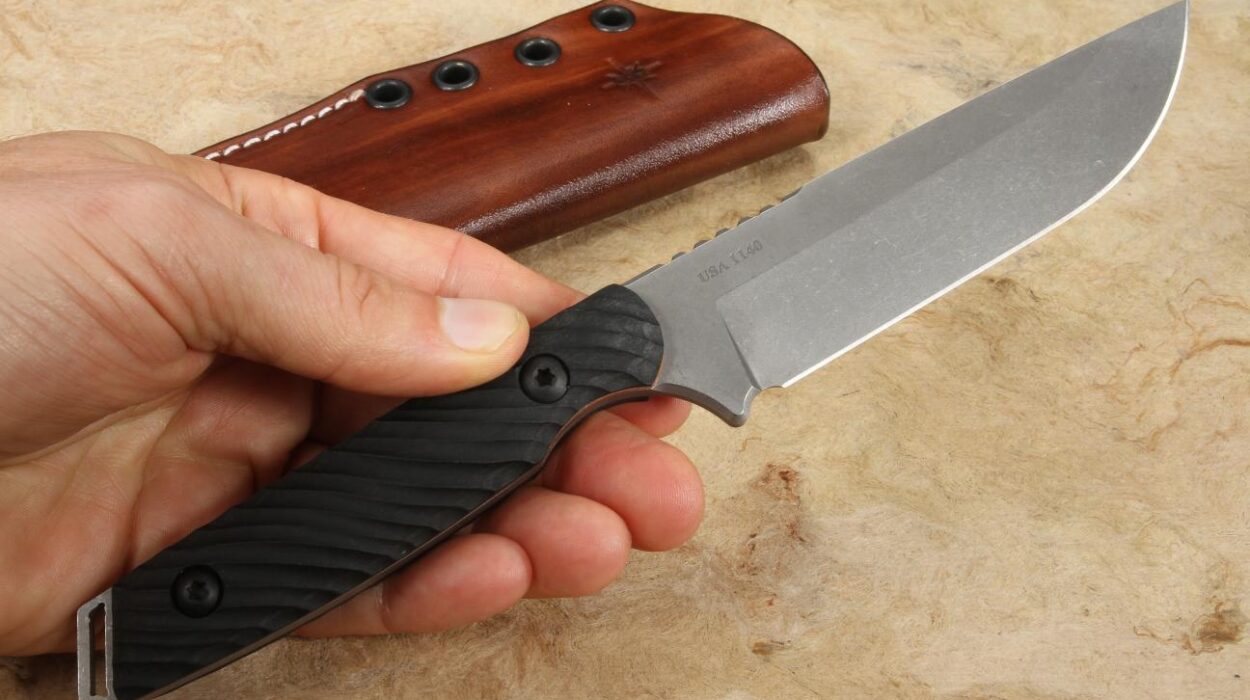In the fast-paced world of culinary arts, the tools you use can make all the difference. Among these tools, lightweight fixed blade knives stand out for their reliability and efficiency. Designed for durability and ease of use, these knives are a favorite among kitchen professionals who value both precision and comfort. In this comprehensive guide, we’ll explore the many facets of lightweight fixed blade knives, from their design to their applications in the culinary world.

Understanding Lightweight Fixed Blade Knives
At the core of any great kitchen tool is its design. Lightweight fixed blade knives are renowned for their simple yet effective construction. Unlike folding knives, these are crafted from a single piece of metal, offering superior strength and stability. This construction allows for a thinner blade, which is pivotal for precise slicing and dicing.
Design and Material Considerations
The design of a lightweight fixed blade knife often involves high-quality stainless steel or carbon steel, both known for their sharpness and durability. The choice of material impacts both the weight and the edge retention of the knife, crucial factors for professionals who spend hours in the kitchen.
For more on how blade materials affect performance, check out blade edge retention techniques.
Handle Ergonomics
Another critical aspect is the handle design. Ergonomically designed handles reduce fatigue and improve control, making it easier to perform delicate tasks. Many modern knives feature textured grips or contoured shapes to enhance comfort and safety. For an in-depth look at handle designs, visit handle ergonomics.
Advantages of Lightweight Fixed Blade Knives
Why do kitchen professionals prefer lightweight fixed blade knives? The answers lie in their numerous advantages.
Precision and Control
The thin, sharp blades of these knives allow for precise cuts, essential for intricate culinary tasks. Whether you’re filleting a fish or chiffonading herbs, the control offered by these knives is unparalleled.
Learn more about blade control at balance and weight distribution.
Durability and Maintenance
Fixed blade knives require less maintenance compared to their folding counterparts. Their robust design means fewer moving parts, thus reducing the risk of mechanical failure. Regular honing and occasional sharpening keep them in peak condition.
Applications in the Kitchen
From preparing vegetables to carving meats, lightweight fixed blade knives are versatile tools in any kitchen. Their adaptability makes them suitable for various culinary tasks, enhancing both efficiency and creativity.
Vegetable Preparation
For tasks that require precision, such as julienning or dicing, these knives provide the accuracy needed to achieve uniform cuts, which is crucial for both presentation and even cooking.
Meat and Fish Preparation
When dealing with proteins, the strength and sharpness of a fixed blade are invaluable. It allows for clean, smooth cuts without tearing the meat, preserving its texture and flavor.
For more insights into knife applications, visit different types of knives.
Choosing the Right Knife for Your Needs
Selecting the right lightweight fixed blade knife involves considering several factors, including blade size, material, and handle design. By weighing these elements, you can find a knife that complements your cooking style and meets your specific needs.
Blade Size and Shape
The size and shape of the blade should align with the tasks you perform most frequently. A shorter blade might be preferred for detailed work, while a longer blade is better suited for larger cuts.
For more information on blade designs, see blade grinds.
Handle Material
The material of the handle can significantly impact comfort and grip. Materials such as wood, plastic, and rubber each offer different benefits, from aesthetic appeal to practicality in wet conditions.
Conclusion
In conclusion, lightweight fixed blade knives are indispensable tools in the kitchen. Their precision, durability, and versatility make them a favorite among culinary professionals. By understanding their design and applications, you can enhance your culinary skills and efficiency.

FAQs
What makes fixed blade knives preferable in professional kitchens?
Fixed blade knives provide stability and strength due to their construction. This makes them ideal for precision tasks, which are common in professional settings.
How should I maintain my lightweight fixed blade knife?
Regular honing and occasional sharpening are essential for maintaining the edge of the knife. Ensure it is stored properly to avoid damage.
Can lightweight fixed blade knives be used for all kitchen tasks?
Yes, they are versatile enough for various tasks from chopping vegetables to slicing meats, though the specific design might make some knives better suited for certain tasks.
This article contains affiliate links. We may earn a commission at no extra cost to you.


